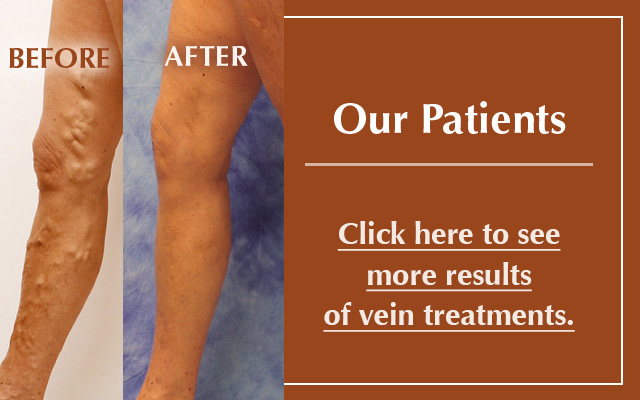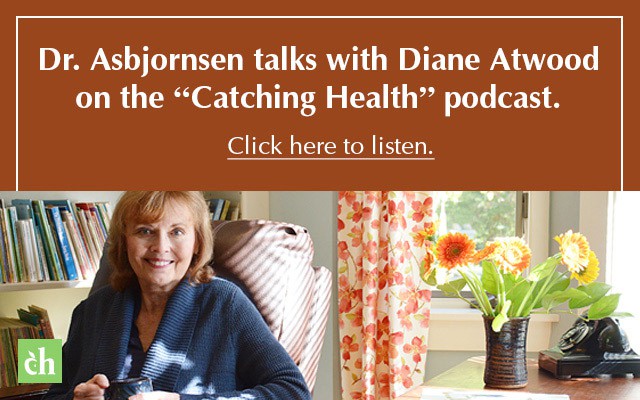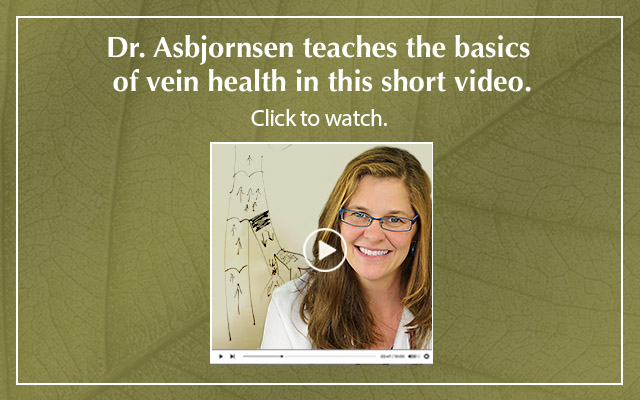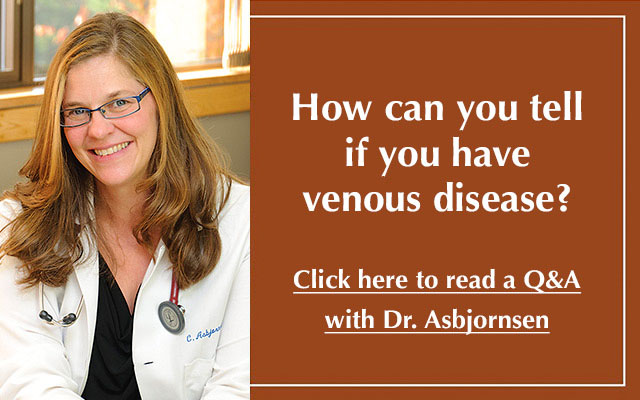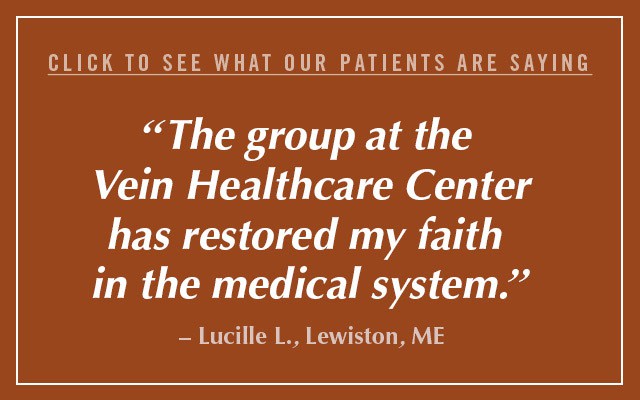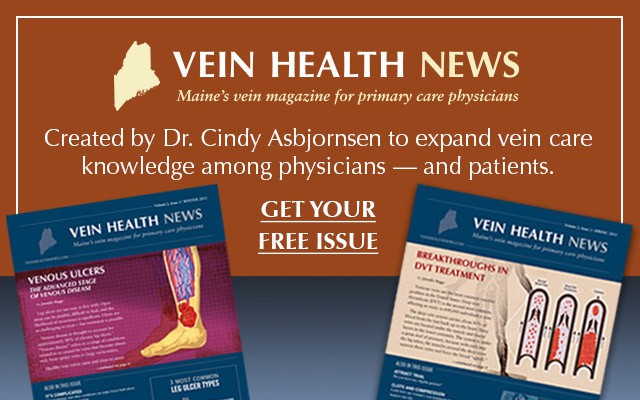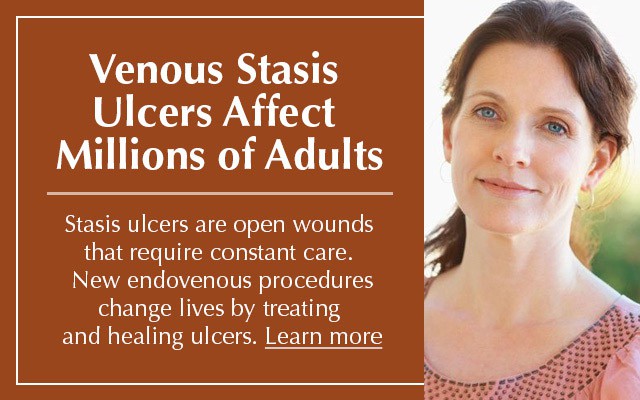Alternative Treatments for Venous Disease
Interest in alternative options for preventing, treating, and stopping the progression of venous disease continues to grow. Studies have shown encouraging potential for many herbal supplements and alternative medications, and current research promises to advance our understanding of these natural treatments.
For those interested in herbal medications, it is important to understand that while herbal treatments may help eliminate symptoms, their benefits are limited to the period of time that the medication is being taken. They do not fix the underlying cause of the symptoms. Those considering alternative treatments should also understand proper dosage recommendations, risks, and side effects. Alternative medications are not regulated in the U.S., and some can be toxic if taken improperly.
Patients experiencing symptoms, and those who think they may be at risk of venous disease, are urged to obtain an evaluation by a vein specialist to understand their options for treating the underlying cause of their symptoms. It is important to ensure that symptoms are not an indication of a more serious medical condition, such as phlebitis or thrombosis.
Alternative Medications
Rutin/Rutosides
Rutin, also referred to as rutosides, is a compound found in some plants and has become a widely accepted alternative treatment for venous disease symptoms. Rutin is a citrus flavonoid glycoside found in food such as buckwheat, asparagus, berries, and the rinds of some citrus fruits. Studies indicate that this flavonoid acts on blood vessel health, positively affecting varicose veins, superficial venous insufficiency, and venous ulcers. Rutins have been found to improve circulation, strengthen capillaries, reduce inflammation, and improve venous edema.
Forms of rutin are used in Europe, Mexico and other Latin American countries for the treatment of venous disorders, and it is widely available as a supplement. Studies continue into its potential, and while rutin appears safe for short-term treatment, it should be taken under the guidance of a professional to maintain safety and avoid adverse effects.
Horse Chestnut Extract
Horse chestnut extract, the common name for aesculus hippocastanum, is a promising natural medicine for treating chronic venous insufficiency. It is an anti-inflammatory herb that has been found to promote normal tone of the vein wall, thereby improving circulation through the veins. Benefits can include reduced leakage of the capillaries and a reduction in lower leg swelling. While horse chestnut extract is not regulated in the U.S., it is available as a supplement, and it is a popular treatment in Europe, where it is considered an effective alternative for compression stockings.
Studies support the potential of horse chestnut extract, and it appears to be safe and effective when used properly. However, additional research of these findings is required, and proper processing of supplements is critical to avoid toxicity and side effects.
Gotu Kola
Gotu kola, also called centella asiatica, is a trailing plant native to Asia. Its many uses include the treatment of venous insufficiency and the healing of wounds. Gotu kola stimulates the production of collagen, a protein found in the fibrous tissue of blood vessels. Studies have reported its effectiveness in healing vein walls and tissues. Its benefits include reduced swelling and improved circulation and vascular tone. Further studies are needed to understand more about gotu kola. It is currently available in supplement form and in topical form to treat wounds.
Red Vine Leaf
Red vine leaf extract, also called grape leaf or folia vitis viniferae, has undergone studies that support its potential for the treatment of venous insufficiency. The antioxidants in red vine leaf can strengthen blood vessels and reduce inflammation, and it is used to maintain leg circulation and improve tired, heavy, aching legs. It is most commonly used in France and the U.K. Comprehensive safety studies on red vine leaf have not yet been performed, but it is a registered over-the-counter medication in some European countries. It is widely available in capsules.
Butcher's Broom
Butcher's broom is the common name for ruscus aculeatus, a berry-producing evergreen shrub found in the Mediterranean. It is recognized for its positive effect on blood flow. Recently, European interest in the herb has focused on its potential for treatment of varicose veins, and it has been approved by Germany's regulatory commission for herbal therapies as a treatment for chronic venous insufficiency. Research conducted with butcher's broom has shown decreases in leg swelling, pointing toward its efficacy. Comprehensive safety studies, however, have not been reported.
Bilberry
Bilberry is a plant, whose dried, ripe fruit and leaves are used to create oral preparations. Bilberry contains potent antioxidants called anthocyanosides, which strengthen blood vessels and capillary walls and improve red blood cells. Bilberry supplements are used to prevent and treat circulation problems, including chronic venous insufficiency. Bilberry fruit are also antiangiogenic, meaning they can reduce the growth of blood vessels that may lead to varicose veins.
Bromelain
Varicose veins and spider veins have excess amounts of fibrin, a fibrous protein that promotes the clotting of blood. Bromelain is the digestive enzyme derived from the stems of pineapples that can break down fibrin and promote better circulation. It has been suggested to help treat chronic venous insufficiency and may prevent the swelling and soreness caused by varicose veins.
Pine Bark Extract
Pine bark extract is extracted from the inner bark of certain European pine trees and contain the antioxidants oligomeric proanthocyanidin compounds (OPCs). The OPCs in pine bark extract bind to the collagen in blood vessel walls making blood vessels stronger and more elastic, which subsequently improves circulation. It has anti-inflammatory effects, and has been shown to reduce symptoms of chronic inflammation, a contributor to venous insufficiency. It can also reduce leg and ankle edema. The extract has been widely studied for the past 40 years and has many published studies and review articles ensuring its safety and efficacy. A recent study in the International Journal of Angiology suggests that pine bark extract may significantly improve the appearance, swelling and discomfort of pregnancy-induced varicose veins and spider veins.
Sweet Clover
Sweet clover is a biennial or perennial herb with flowering branches and leaves that have been used medicinally for thousands of years. Sweet clover contains coumarins, and when the plant is fermented, it produces dicoumarol, a potent anticoagulant. It is sometimes used along with regular medicines for treatment of blood clots in the veins. Sweet clover is believed to support venous health and ease varicose veins, leg pain and heaviness, phlebitis and thrombotic conditions. Sweet clover also acts as a diuretic and can help to relieve excess fluid retention and edema. (Other uses include treatment of hemorrhoids and blockage of the lymphatic system.) Pregnant and nursing women should not use sweet clover supplements, nor should those who use prescription blood thinners (warfarin or Coumadin, for example), or have any issues with blood coagulation.
Other Alternative Treatments
Elevation
In some cases, elevation of the legs can alleviate pain or swelling that is the result of early stage venous disease. Elevation of the legs above the heart for a period of 3 minutes, usually in the morning and several times throughout the course of the day, can encourage blood flow from the legs and decrease the pooling of blood. A vein specialist can guide patients on the most effective elevation techniques.
Exercises
Regular movement to prevent long periods of sitting or stagnancy is recommended for the prevention of venous disease and for easing its symptoms. Exercises for the feet, toes, and ankles, (tapping the toes and flexing the feet, for example) can help blood flow in the legs if done several times a day.
Prevention
Because venous disease has a strong genetic component, prevention can help those with a family history to avoid clots and ward off symptoms. Important components of prevention include maintaining a healthy weight, exercising regularly, and quitting smoking. At the Vein Healthcare Center, Dr. Asbjornsen can help you develop a prevention plan that is right for you.
Questions about
alternative treatments?
Dr. Cindy Asbjornsen is a certified phlebologist who values your overall health. She will work with you to help find a treatment plan that is safe, effective, and fits your needs. Contact Dr. Asbjornsen at the Vein Healthcare Center in South Portland Maine by calling 207-221-7799. Read more about her comprehensive approach to care.
 Do I have Venous Disease?
Do I have Venous Disease?
Millions of people across the United States experience its symptoms. Find out more by asking yourself these 12 questions
![]() Educational Video
Educational Video
Get practical, easy-to-understand explanations about vein treatment in this ACP-produced video. Click here to watch.













